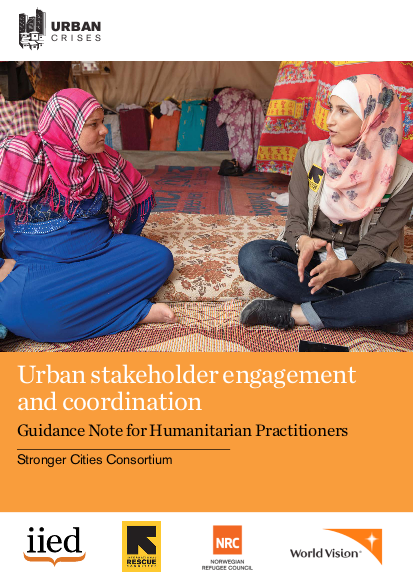Guidance Note for Humanitarian Practitioners

A rapidly urbanising world presents both challenges and opportunities for humanitarian aid approaches. Urban areas often have a greater density of people and diversity of affected populations, stronger civil society, and more developed and complex governance structures, service delivery systems, and market systems. These factors heighten the importance of coordination and collaboration.
Learning from prior urban responses also highlights the potential risks of poor coordination including development of inaccurate targeting strategies, fostering of misconceptions and miscommunication, and even the undermining of municipal and local capacity in the long term.
Despite these challenges, well developed and coordinated urban responses can leverage opportunities – reaching larger numbers of affected people efficiently, drawing upon and improving local response mechanisms, addressing existing inequalities, and contributing to the resilience of the city.
This guidance note provides key principles and considerations for individual organisations to use when making decisions on how to engage and coordinate with local and international actors throughout the programme life-cycle, to ensure effective implementation of the agency’s response. It is intended to help improve the communication, collaboration, and coordination of humanitarian agencies with other stakeholders in urban contexts.
Links
Resource collections
- Coordination
- Evaluating humanitarian action
- Topics
- UN Habitat - Urban Response Collection
- Urban Response - Urban Crisis Preparedness and Risk Reduction
- Urban Response Collection - Community Engagement and Social Cohesion
- Urban Response Collection - Economic Recovery
- Urban Response Collection - Environment and Climate Change
- Urban Response Collection - Housing, Land and Property
- Urban Response Collection - Urban Crisis Response, Recovery and Reconstruction
- Urban Response Collection - Urban Resilience
